I was just talking to a friend who said something like, “maybe with Biden it’ll get better,” referring to housing or senior care or food quality or… I can’t remember what it was. But I have heard this sentiment plenty of times in the past couple of months, and if you read the national liberal press, from the NY Times to the Nation or New Yorker or Mother Jones, there’s a palpable enthusiasm for the FDR-like “boldness” of the Covid $2 trillion, with its new basic income for children, its extended unemployment and medical premium subsidies, etc. The long, sordid history of Biden’s opportunism is being quickly swept under the rug in favor of this new, unencumbered embrace of a post-Reagan, post-neoliberal re-energizing of the government.
Lost in all this, besides Biden’s decades of support for racist policing and his corrupt pandering to credit card and banking industries, is the role of concentrated capital in running the show. There’s no way Biden or Harris is anything but in service to concentrated capital. So to understand this moment better, we have to go beyond the immediate drama of whether or not the Democrats will take the power they hold by a sliver and expand it through DC (and maybe Puerto Rico) statehood with its two (or four) new senators, put through the voting rights acts bills that have already passed the House, etc. Any serious effort to hold, consolidate, expand, and extend their power simply requires they overcome the reticence of Feinstein, Sinema, Manchin, and the other millionaire Senators defending the Jim Crow filibuster in the name of a long-lost bipartisan comity.
But to what end would they consolidate power? What is their real agenda? Finally spending some of the massive federal budget on people below the top 10% of wealth is an easy and long overdue adjustment that may gain the current Democrats enough political capital that they can stay in power longer than their multiple neoliberal predecessors who squandered every opportunity to take care of their erstwhile base. But we still don’t see clearly what their agenda is. Which parts of capital, which futures, are they working for?
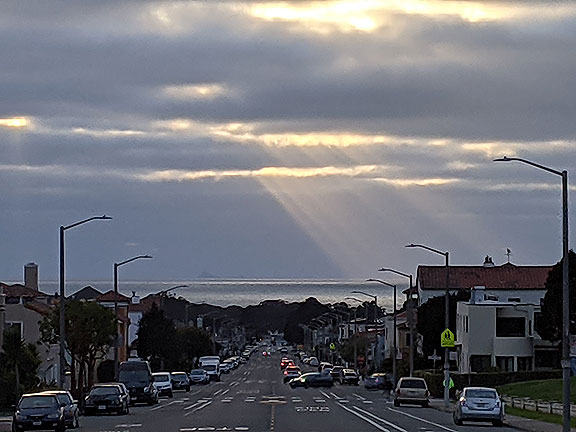
Decarbonizing the energy economy is a worthwhile goal, whether or not one has any aspirations to break from capitalism per se. Using the pandemic to further consolidate medical capital, maybe even nationalizing parts of it through Medicare and the like, while freeing up Big Pharma and the hospital chains to continue their monopolizing (oligopolizing) ways, looks like one goal. Bolstering the concentrated power of big banks and private equity syndicates seems like another, reinforcing their control over the cash-rich spigot of housing. And maybe the leaders of those industries recognize that their legitimacy has already outlasted several moments when it might logically have collapsed. A turn toward repairing the social safety net, even expanding it modestly, is one way to relegitimize the larger system’s existence and its ongoing control by the .01%. A massive redistribution of wealth, while deserved and necessary, is explicitly NOT the goal of the current regime—the unfamiliar warmth of a shot of stimulus to the safety net already feels like more than we could hope for after four harsh decades. We’ve normalized the austerity imposed during that kleptocratic frenzy, unleashed by Reagan in the proudly greedy ’80s, and that reached its desultory zenith in the venal stupidity of the Trumpist swamp that sought to drown everything in itself.
So now there is a tepid social-democratic left minority in the Congress, claiming the mantel of a Left that wants to check the power of capital. But AOC and Sanders and the gang are all bound to collaborate with the logic of capital accumulation since they have no vision beyond that. The much-promoted “Green New Deal” is fundamentally a strategy of industrial growth and job expansion at a time when we should be reconsidering the basic logic of how our physical lives are organized. Such a consideration might lead some readers to think in personal terms, but that’s exactly wrong, as well said here by Raj Patel and Jason Moore in A History of the World in Seven Cheap Things:
…your ecological footprint isn’t a lifestyle choice. It’s a choice in the same way that English peasants, once kicked off the land, were “free” to find wage work—or starve. Worse yet, footprint thinking teaches us to consider the drivers of planetary crisis as grounded in the aggregations of “people” and “consumption” rather than in systematic dynamics of capitalism and empire… these modes of thought explain our present, disastrous state of affairs by consistently and significantly underestimating how the present is the product of a long past, of a bloody history of power, capital, and class, entwined in the web of life. (p. 204-205)
More industry, more economic growth, more work, are not goals that I associate with a future worth fighting for. A left agenda should be focused on work reduction, resource conservation, ecological repair, and working on a new social consensus on how we measure and self-manage our well-being as a society—and not just locally or regionally or nationally, but globally. And fortunately, there are many examples of new thinking about how we conceive of, and measure, economic life, and well-being more broadly. No matter how we ultimately shift our thinking—even if we embrace my favorite goal of radical work reduction, there is much to do. Reconfiguring how we interact with water, soil, air, and energy are fundamental to our ability to adapt to and thrive in a world that has locked in inevitable climate chaos.
But we aren’t even talking about anything as basic as that. It’s not hard to understand why, given that at least half the population of the U.S. is committed to a backward-looking White American project—based on heavy industry and centralized agribusiness, oil, cars, a segregated suburbia—that is already disappearing into history’s dustbin. Nevertheless, to gird ourselves for the deeper transformation rushing towards us, it is helpful to peruse some of the historic roots of the particular configuration of capitalism we have now, a capitalism that has promoted a process of hyper-concentration that used to be called monopoly (and oligopoly).

The books that inform this particular perambulation are Goliath: The 100-Year War Between Monopoly Power and Democracy by Matt Stoller, The Secret Life of Groceries: The Dark Miracle of the American Supermarket by Benjamin Lorr, Doughnut Economics: 7 Ways to Think Like a 21st Century Economist by Kate Raworth, and a book I mentioned on my blog three years ago: my pal Raj Patel’s book (co-written with Jason Moore) A History of the World in Seven Cheap Things: A Guide to Capitalism, Nature, and the Future of the Planet. In it they explain in very clear language how the world system only works because vital ingredients have been so cheapened that they subsidize the cycles of exploitation required for profitability. It’s highly accessible and well worth a read as you ponder how such an insane organization of life manages to keep on going in spite of so many reasons why it shouldn’t.
In the waning days of the Trump administration, antitrust lawsuits were filed against Facebook and Google, beginning a years-long process to address their concentrated economic power in the realm of social media and online advertising. This is long overdue, though federal anti-trust efforts are notoriously toothless and are not likely to result in any serious transformations. The surveillance business model underlying these and other corporations is based on their ability to freely appropriate our activities and behaviors as raw materials for their automated data processing and predictive algorithms. It’s hard to imagine a new legal regime being imposed that returns control of our private lives to us at the expense of these corporate behemoths. It’s worth noting, in the meantime, that a fight against seemingly invulnerable financial and political power is not unprecedented in the U.S. Anti-monopolists spent decades at the end of the 19th and beginning of the 20th centuries fighting to break up the railroads, the oil trust, the steel trust, and other vast syndicates of power. Richard White’s magisterial work on the late 19th century helpfully documents the role of pro-corporate judges in denying democratic reforms:
Labor reformers and antimonopolists achieved considerable success in legislatures and Congress. They passed regulatory legislation that curtailed sweatshops and banned manufacturing in tenements. They passed laws that required payments to workers in cash rather than scrip, banned contract labor, mandated shorter workdays, outlawed the contracting of prison labor to private employers, created an array of health and safety requirements, and regulated railroads. Judges, however, struck down much of this legislation, invalidating more than sixty labor laws alone between 1880 and 1900. (p. 811)
Anti-monopoly efforts were never very successful except for the immediate years after the 1930s New Deal. In Goliath, Matt Stoller details that history, going over the earlier efforts of the racist Woodrow Wilson administration to implement (eventual Supreme Court Justice) Louis Brandeis’s vision of an economy without monopolies in the 1910s, and then how bankers organized by JP Morgan and Andrew Mellon took control of the government in the 1920s (it was said that at least four presidents “served” Treasury Secretary Andrew Mellon!). It was FDR’s New Deal that finally broke the power of Mellon and built up a regulatory system that prevented finance from dominating the economy again until the 1960s. A hero in Stoller’s account is congressman Wright Patman of Texarkana, Texas, who chaired the House Banking Committee from the late 1930s all the way until 1974 when he was replaced by the incoming Watergate generation of new Democrats. By Stoller’s account, it was Patman’s dogged commitment to checking the power of concentrated financial capital that kept banking a sleepy business backwater during the 1940s, 1950s and into the 1960s, but with the invention of the Certificate of Deposit by Walter Wriston at CitiBank in the early 1960s, public control over money and banking quickly began to erode.
By the time I came of age and got one of my first “real” jobs as a temporary word processor (operator) at Bank of America in 1979, I was employed typing up the user manuals for future tellers in Florida where BofA planned to expand as soon as restrictions on interstate banking were lifted. The 1980s brought in Reaganomics which re-enshrined greed as its own goal, but also implemented the privatizing logic of neoliberalism and unleashed the financial sector (it was under Clinton in the 90s that the final destruction of the financial regulatory regime of Glass-Steagal was completed). In just a few years, a half dozen senators and congressmen were engulfed in the Savings & Loan scandals and left office in shame. The Federal Government was on the hook for billions in fraudulent real estate investments that had gone sour, and after some bankruptcies and corruption convictions (Michael Milkin being the most prominent, recently rehabilitated by Trump), the merger mania and speculative frenzy continued, eventually leading to the housing bubble bursting in 2008. Our astronomical housing prices today are a direct result of the past decades unrestrained financialization of homes (among other asset types). In our era, a few giant national banks dominate the economy in a way that was inconceivable in the mid-20th century. “Too big to fail” has also meant that the government has bolstered the power and control of concentrated ownership at every turn, whether Democrat or Republican.
It affects our lives in every way. Let’s look at food. In Goliath, Matt Stoller examines how hundreds of thousands of small corner grocery stores were overrun and replaced by the modern supermarket. It started in 1912, when an employee of the Great Atlantic & Pacific Tea Company presented
a plan for the “economy” grocery store format. This store would have no frills, just low prices. It had no telephone for orders, and not even a sign: just a storefront piled high with groceries that operated on a pure cash basis. He piloted one around the corner from one of A&P’s larger operations in Jersey City. Within six months, the high-price store went out of business. A&P rolled out the “economy” grocery store format nationwide, ushering in the modern era of food retailing. (p. 163)
In 1914, A&P had $31 million in revenue and fewer than 500 stores. Ten years later, it had $440 million and 1,400 stores. This growing concentration was a piece of a larger movement in American retailing towards chain stores. Stoller usefully shows how leftists and state planners saw the growth of chain stores as progressive, even in the early 20th century.
Walter Lippmann, in his influential 1914 book Drift and Mastery; wrote of the “dingy little butcher-shops, little businesses with the family living in the back room, the odor of cooking to greet you as you enter the door, fly-specks on the goods—walk through any city and marvel at the anarchy of retail business. Well, the large department store, organized markets, the chain of stores, the mail order business, are changing the situation radically for the purchaser. (p. 164)
The fight against chain stores was a key element of small business lobbying during the middle of the 20th century. Wright Patman was their champion, leading investigations of the American Retail Federation, and, along with the Federal Trade Commission (FTC), showed that chains were using “killing prices” to destroy independent business. Think of what Amazon has done in the past 20 years to destroy brick-and-mortar retailing. Back then, Patman argued that A&P was a dictatorship of the grocery business in America.
In The Secret Life of Groceries, Benjamin Lorr brings a sharp eye and even sharper pen to skewer the horror of the modern food delivery system. And I say horror because his chapter on the trucking industry’s role in bringing all the food we eat to the stores where we buy it, details how the companies profit most from the use of trainee truckers. These people are lured into the business by promises of being their own boss, driving their own truck, etc., playing to all that rugged individualist crap that motivates so many Americans. But what they find is they’ve sold themselves into a thinly disguised debt peonage, saddled with enormous debts for “schooling” and the truck lease, never able to gain enough work to make their payments in full—and the actual conditions of work are nightmarish. In a later chapter he travels to the Myanmar-Thailand border to follow the saga of undocumented Burmese workers who become enslaved on Thai shrimping vessels. Turns out there aren’t many shrimp in our local markets that can be shown to be free of slave labor. In fact, ten different commodities have been shown to depend on slave labor:
Over 35 million people per year work under coercion, more than in the entire history of the Atlantic slave trade, and their labor is responsible for some $150 billion on profits per year. Sex slaves, like the women in Darfur, represent less than a quarter. In many ways, the horror is so vast that it risks overwhelming anyone who learns about it… Ten different commodities met these new criteria [was the product imported into the U.S. in significant quantities? Would the severity of abuse shock consumers?]: chocolate, coffee, shrimp, cattle, conflict materials such as tungsten, cotton, timber, sugar, palm oil, and gold. (p. 249-250)
Back in the supermarkets, Lorr follows a woman who invented a condiment and spent years building it into a national brand (“Slawsa”!?). But getting it on the shelf requires the kind of corrupt pay-offs once characteristic of the early supermarket industry:
The buyer asks for money; in return you get inches on the shelf. Not a special endcap display, not a center spot right at eye level, just inches, somewhere. These payments amount to $9 billion a year in industry profit. To get a sense of how lucrative these can be for an individual store, in January 2017, one national retailer was charging $55,000 for 22×12 inches of shelf space. For a single month. This is a retailer likely operating with those industrywide 1.5 to 3 percent gross margins, so we are talking rocket fuel to their bottom line. (p. 136)
Since the breakup of AT&T in 1984 after a years-long legal battle, the old phone companies quickly reconsolidated themselves and resumed oligopolistic practices. A few large phone companies are matched by a few large oil companies, a few large car companies, a few large banks, a few large food distributors, etc. etc. How did we go from a Depression-era clarity that large concentrations of wealth were bad for democracy and bad for the working class to the world we’re in now? This is where Stoller’s work offers some important insight. He argues that a couple of key influential intellectuals on the liberal left helped to remove concentrated wealth from the center of concern:
[Historian Richard] Hofstadter and [economist John Kenneth] Galbraith together created a new language and new frame of analysis designed to eliminate the antimonopoly tradition in American politics. A new villain, the grubby racist small businessman, had replaced the money trust. The antimonopolists, far from noble, were just motivated by status anxiety. Countervailing power, operating automatically, addressed any ills from concentrated corporations, which brought modernity, wealth, and technological progress. The real political question for liberals centered on how to promote art and beauty, end racial bigotry, stop environmental pollution, and promote peace. Corporate power nowhere on the list. (p. 219) … The politics of affluence and consensus history deeply shaped many of the key postwar social movements that touched on political economy, such as consumer rights and environmentalism. They also, over the course of the next generation, entirely changed how liberals viewed the world, and themselves within it. Liberals lost touch with the politics of commerce. They believed Hofstadter’s arguments that America was free from ideological conflicts over political economy, and Galbraith’s arguments that the great questions over production and Wall Street had been solved. (p. 222-23)
Stoller offers a careful argument about the role of Robert Bork, the Chicago School, and the business elite in developing arguments to defang anti-monopoly political policies rooted in the New Deal. Democrats swept Congress in the wake of Nixon’s resignation in 1974, but many of the newly elected were the young generation that had no connection to the Depression, and no political loyalty to either the working class or the structures of governance developed in the 1930s. Some were legitimately committed to overthrowing the profound racism that had kept the South Democratic for all those New Deal years. But many succumbed to the arguments about markets and regulations developed by the Chicago School and the deregulationists (as Stoller points out “The concept of “deregulation” was naturally incoherent—there is no such thing as a market without regulation; the question had always been whether public institutions or financiers organize market rules.” (p. 360)).
Ralph Nader became famous for promoting consumer rights in the 1960s and 1970s, and he contributed to the demise of anti-monopoly politics, perhaps inadvertently.
The consumer rights movement wiped out the small business grassroots constituency that had protected the FTC. When big business went on the attack, there was no one to defend antimonopoly tradition. Carter’s consumer thrust failed. And the consumer rights movement, which never really had a committed grassroots base, found no sustainable institutional way to keep going. When asked why the consumer rights movement fell apart, Ralph Nader simply noted, “Our theory was wrong.” (p. 364-365)
Yes, and from that time on, neoliberalism swept the U.S. and the rest of the world by storm. Public assets have been stripped from governments, public commons (what was left of it) has been largely sold off to interests connected to political power, and the limited safety net that existed in the U.S. and Europe was systematically shredded. Amazon, Google, Facebook, Apple and Microsoft have been allowed to take over huge swaths of the media landscape. In the case of Amazon (and Walmart), all the techniques pioneered by A&P to dominate groceries in the early 20th century have been reapplied at scale, using low prices that required years of unprofitability in order to take over a dominant share of retailing. Now we have the Biden administration, and in these early months we can imagine and hope that there may be a generational shift underway. Is this the long-awaited end of Reaganism and neoliberalism, and a return to a redistributive governing philosophy that seeks to protect capitalism as a system by ameliorating the more savage behavior and brazen theft carried out by individuals and firms? We’ll know soon enough.
But as I said earlier in this post, we know Biden/Harris are not going to alter the power structure in any meaningful way (their foreign policy continuity with Trump’s anti-Iran and anti-Chinese policies is an early striking example). They may represent the larger interests of the system against individuals, but real people representing real factions of capital are behind them and support this agenda. Who are they? How do they imagine stabilizing capitalism after a prolonged absence of common-sense self-preservation mechanisms (fixing obsolete and building new infrastructure, patching and improving the social safety net, putting environmental health and the urgency of decarbonizing in the face of rampant climate chaos ahead of short-term profits, etc.)? These are interesting questions with undoubtedly interesting answers. But these are not the only game in town. There are dozens of new ways of imagining our lives, economically and socially.
This is already quite long, so I’ll just end with one example of what a properly radically reformist government could do, taken from Kate Raworth’s oft-cited Doughnut Economics:
How can the state start helping the knowledge commons to realize its potential? In five key ways: First, invest in human ingenuity by teaching social entrepreneurship, problem-solving and collaboration in schools and universities worldwide: such skills will equip the next generation to innovate in open-source networks like no generation before them. Second, ensure that all publicly funded research becomes public knowledge by contractually requiring it to be licensed in the knowledge commons, rather than permitting it to be locked away under patents and copyright for private commercial gain. Third, roll back the excessive reach of corporate intellectual property claims in order to prevent spurious patent and copyright applications from encroaching on the knowledge commons. Fourth, publicly fund the set-up of community makerspaces—places where innovators can meet and experiment with shared use of 3D printers and essential tools for hardware construction. And lastly, encourage the spread of civic organizations—from cooperative societies and student groups to innovation clubs and neighborhood associations—because their interconnections turn into the very nodes that bring such peer-to-peer networks alive.
This is only to highlight how different the approach to reopening the schools might be, and how governments at various levels actually could help promote an expanding sphere of Commons-based wealth. This is certainly not the only or even most important list of things a truly reform-minded government can do, but it addresses part of what needs to happen. Returning land to indigenous nations and communities, reparations for Black America, guaranteed rights to housing, food, water, transportation, and communication would be further goals to foreground. Ecologically, along with the deconstruction of vast areas of suburbia, industrial zones, highways, etc., public policy should be committed to wild areas that constitute at a minimum 50% of the land to give nature a chance to restore itself. Indigenous stewardship models should be integrated to shape the ongoing role of humans in coexistence and nurturing a healthy world for all…. What else?


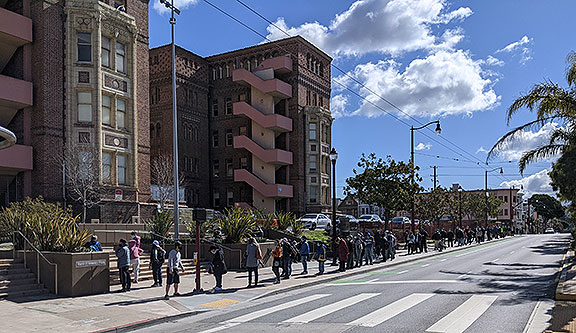
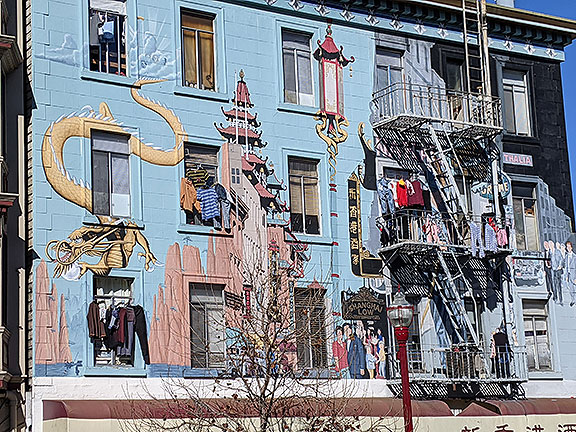

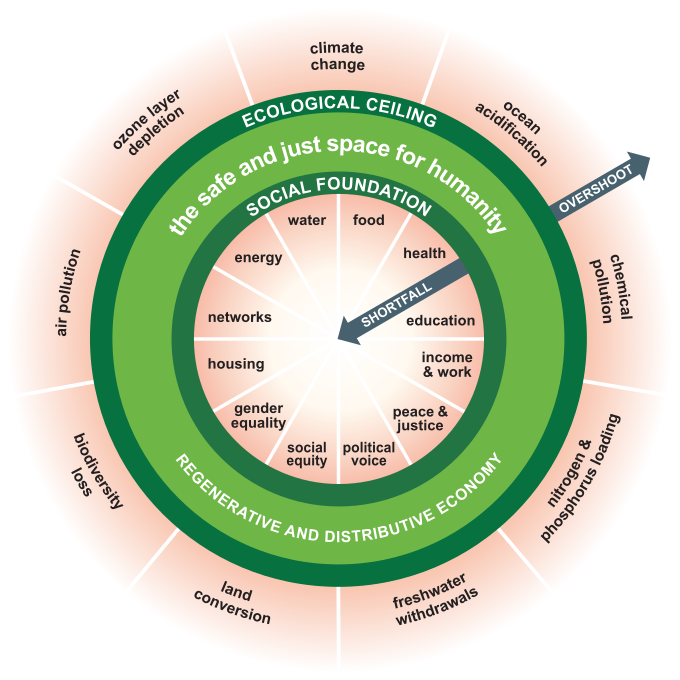

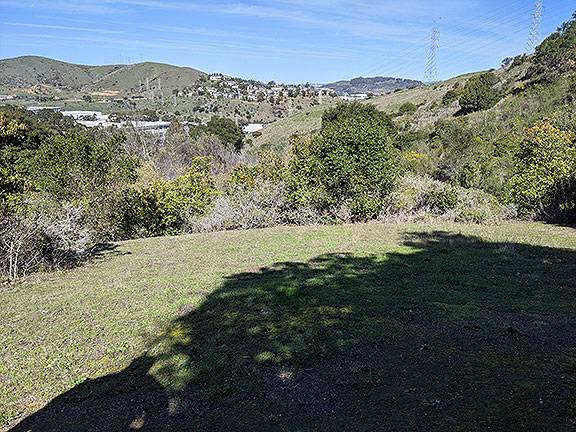

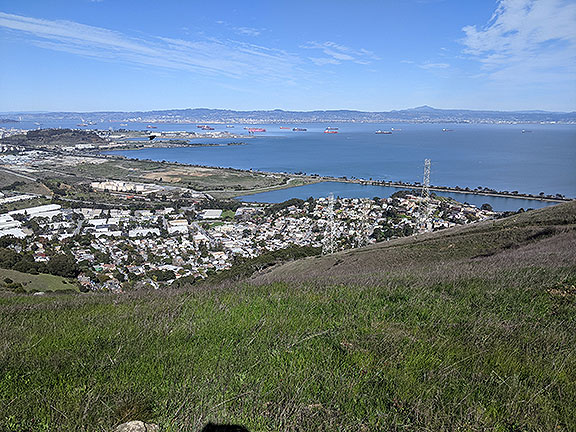
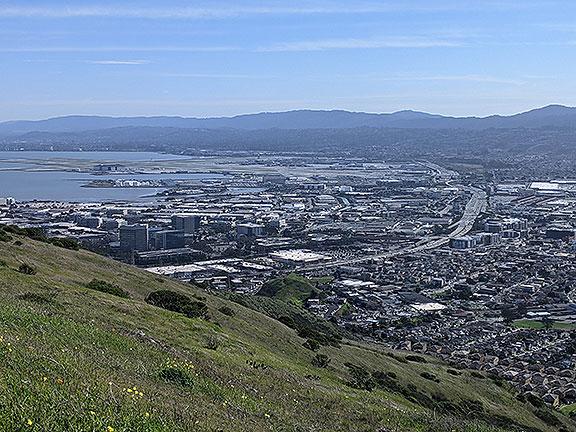
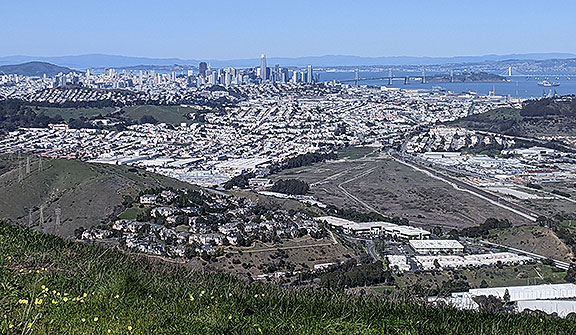
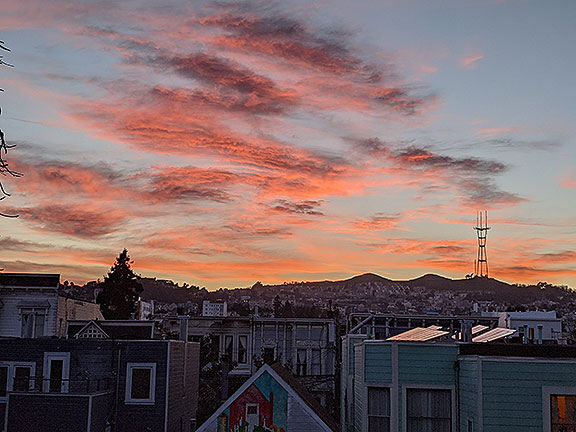











good to see you back up and running always like your keen view on whats happening in our world thanks for the insight you give peace and love to you